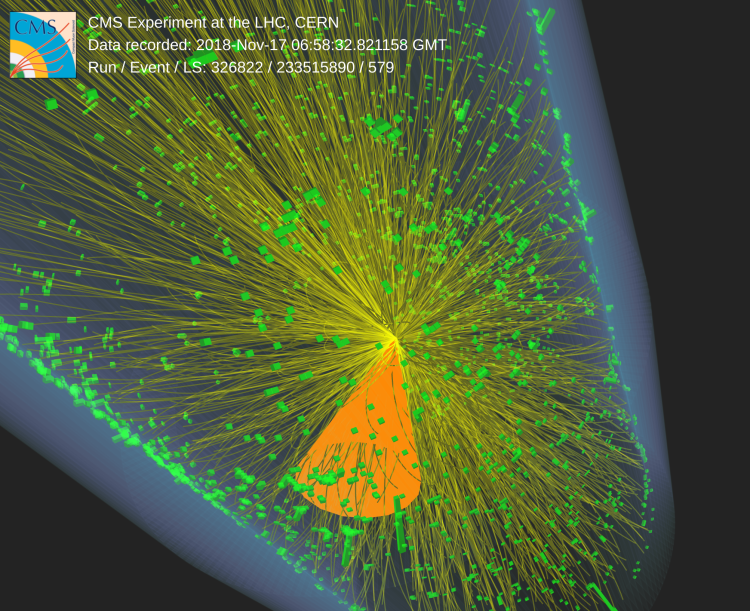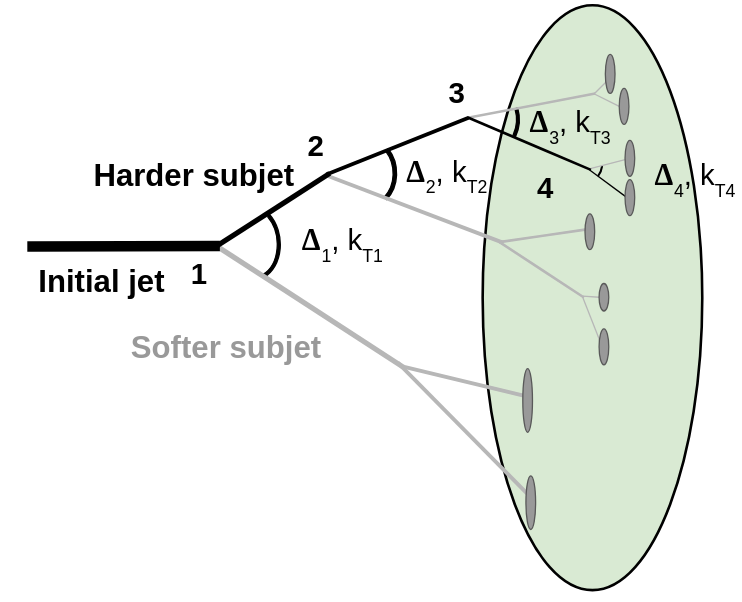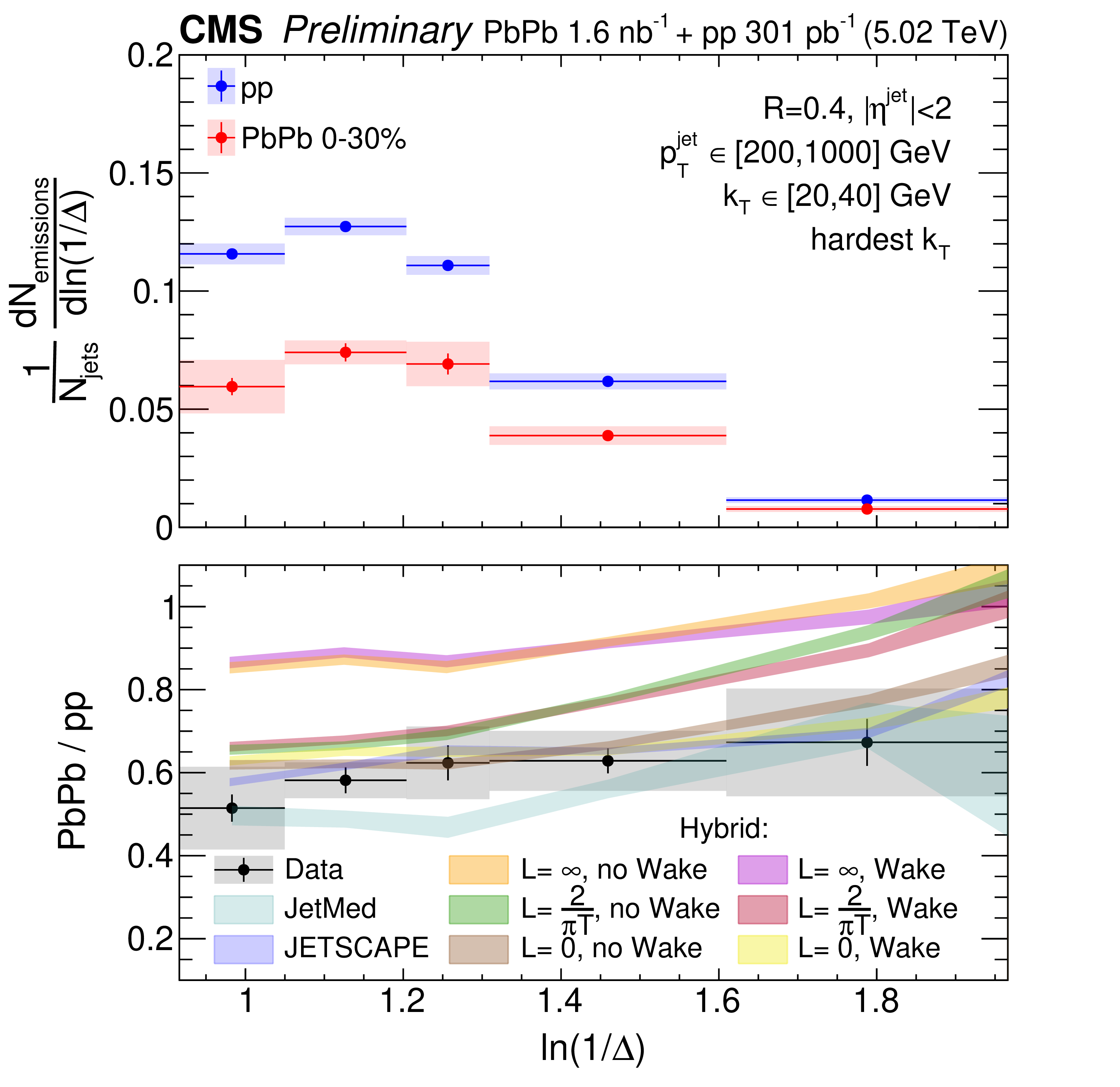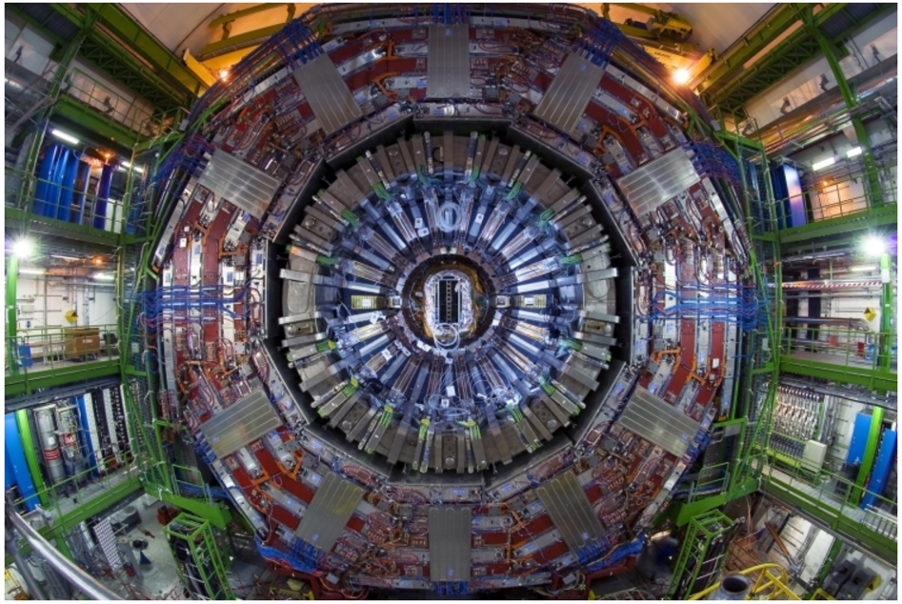
CMS explores the early stages of jet evolution in heavy-ion collisions
When heavy ions such as lead (Pb) collide in the LHC, a new state of matter called the quark-gluon plasma (QGP) is formed. The QGP is a high-temperature near-perfect liquid consisting of strongly interacting quarks and gluons. The energetic partons that initiate jets are produced in the early stages of the collision, while the resulting parton shower is embedded in the QGP and is modified by it. The QGP is expected to induce additional splittings, leading to a softening and broadening of the parton shower. From the study of these modifications, we infer the properties of the QGP. An example of a reconstructed heavy-ion collision jet is shown above, where charged particle tracks are represented as yellow lines, calorimeter deposits are shown in green, and the cone of a reconstructed jet is shown in orange.
A key question is whether the highest-momentum subjet of the parton shower of a QGP-modified jet is dominated by early splittings produced in the vacuum, that is, before the formation of the QGP. This study is the first attempt to probe experimentally the early stages of jet evolution in heavy-ion collisions. Techniques that take into account the jet’s internal structure are used to build a proxy for the parton shower of high-energy jets in PbPb collisions with the CMS experiment. This proxy is a tree-like structure where each node represents a parton splitting, an example of which is shown in Figure 1. We then select the splittings with the highest transverse momentum transfer (kT) and we inspect their angular (Δ) distribution. If the splitting is vacuum-like, the two daughter prongs will interact with the QGP incoherently, but their angular structure is expected to be preserved. As a consequence, the shape of the angular distribution is expected to be identical to that in pp collisions.

Figure 1: An example of a jet parton shower, with the green area representing the angular extent of the jet and the small grey ellipses representing the particles within the jet. The hardest subjet carrying the most momentum at each emission is tracked (shown as solid black lines) and the angle and momentum of the emission relative to the emitter, Δ and kT, is reconstructed with the CMS detector.
In Figure 2 we show the angular distribution of highly-energetic splittings in jets with large transverse momentum in head-on PbPb and pp collisions. Their ratio is flat within the systematic uncertainties which suggests that, for the first time, we have isolated emissions produced in the early stages of QGP-modified jets. These findings suggest that the pattern of this initial splitting is similar in both types of collisions. Even though the jets in PbPb collisions travel through the QGP, their very first "emissions" don't seem to be affected much. It's like the jet hasn't really noticed the QGP yet at this very early stage. This is a big deal because it gives us a first glimpse into how the QGP starts to impact the jets.

Figure 2: The angular distributions of the hardest kT emissions in pp and PbPb collisions at a center-of-mass energy of 5.02 TeV. The ratio is compared to different models.
Our first results probing the early stages of jet evolution in heavy-ion collisions set strong constraints on jet quenching models and pave the way for future measurements at lower splitting transverse momentum to gradually move from the vacuum part to the QGP-modified parts of the parton shower.
Written by: Vangelis Vladimirov and Leticia Cunqueiro Mendez, for the CMS Collaboration
Edited by: Andrés G. Delannoy
Read more about these results:
-
CMS Physics Analysis Summary (HIN-24-016): "First kT scan of the Lund jet plane in heavy-ion collisions to test the factorization of the vacuum and medium parton shower"
-
@CMSExperiment on social media: Bluesky - Facebook - Twitter - Instagram - LinkedIn - TikTok - YouTube

